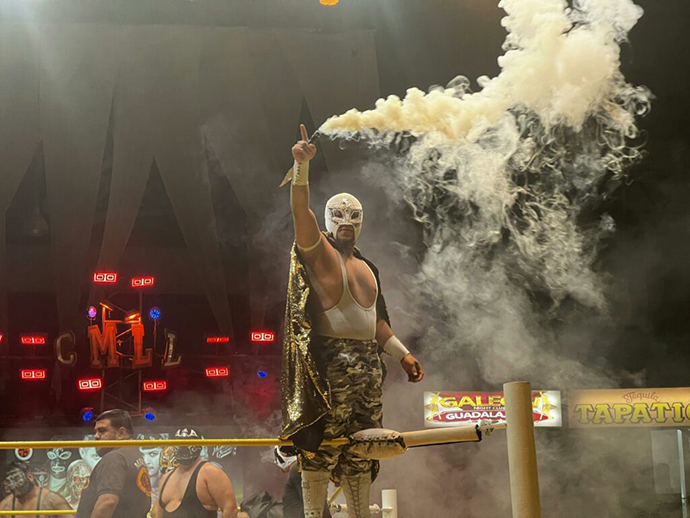Today we’re headed off the coast of England to explore the history of a place called Sealand — the “island country” that isn’t a country.
This is an under-told story about how one guy stole a decommissioned sea fort and created a brand new country from scratch. It’s a story of war, airwaves, guns, hostages, and a coup in international waters.
This issue isn’t about investing, but explores interesting themes of sovereignty and ownership. Oh, and there are pirates. Lots of pirates 🏴☠️
Seriously, this story is insane. Someone needs to turn it into a movie.
Let’s go 👇
Table of Contents
It began with Sea Forts
The year was 1942, and World War 2 was in full swing.
The Luftwaffe (German Air Force) had been bombing UK shipping lines for months, cutting London’s one & only route to the ocean. So the British decided to build four naval sea forts in strategic positions around the North Sea.

The forts were armed with 3.75 inch AA guns and Bofors 40mm guns. They were named the Maunsell Sea Forts after their designer, Guy Maunsell.
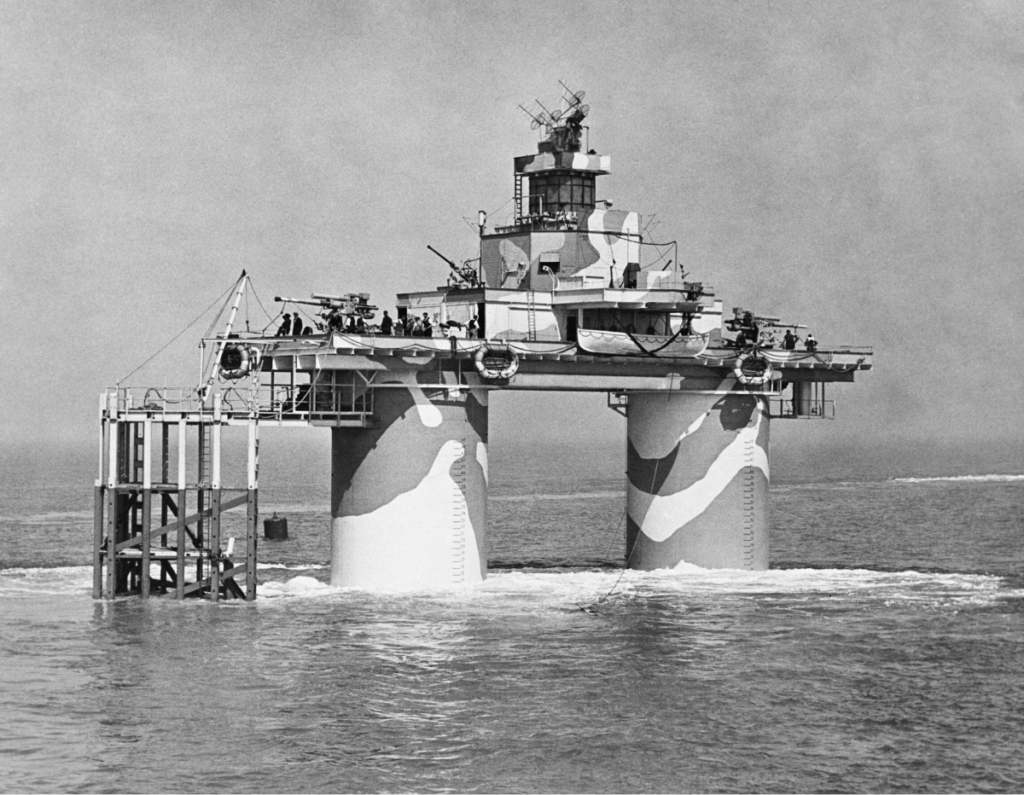
The British Navy built four of these beasts:
- Roughs Tower
- Sunk Head
- Tongue Sands
- Knock John
Along with some smaller anti-aircraft forts built by the Army, ships in the Thames Estuary were now well-defended against German air raids.

What do the Maunsell Sea Forts look like?
The fortresses looked a bit like oil rigs. Each base contained two behemoth concrete cylinders, weighing 9 million pounds and extending 60 feet to the ocean floor. Sitting on top of these cylinders was a 15,000 sq ft structure — about the size of three basketball courts.

The massive concrete towers appear as if they only support the top base. But these forts had a hidden trick — their towers were actually hollow, and inside was a military bunker where the navy operators would live, eat, and sleep. (They went up top when they needed to fire at the Luftwaffe.)
At this point in the war, nobody knew how long the fighting would last. So each cylinder was divided into seven floors and fit with fresh water, backup generators, dining, and storage areas. There was enough food, power, and water to last years. (Remember this point later)

The forts were in full operation for three years until 1945, when Germany surrendered — effectively ending the war.
Decommissioning the Maunsell Sea Forts
For the next decade, a few hundred naval officers occasionally resided in the forts. But the British government decided these things were a pointless money suck, and in 1956 they were officially decommissioned and abandoned.
Now, in wartime, laws are one of the first things to go out the window. But some of the Maunsell Sea Forts were actually operating illegally because they were built in international waters. So after their abandonment, they actually should have been destroyed.
The Brits did deconstruct most of them throughout the 1950s. But a few remained, including Knock John Fort and Rough’s Tower, 12 miles off the coast of Essex.
A decade later, in the mid-1960s, some of these forts were re-occupied for pirate radio.
What is Pirate radio?
“Pirate radio” is a term for radio stations that broadcast without a valid license/permission from authorities.
The British didn’t invent Pirate radio. The US & Mexico had some pirate stations for years. But the BBC inadvertently kicked the movement into high gear when they refused to broadcast the evil rock music taking the world by storm (The Beatles were highly controversial back then, you see.) These offshore forts stepped up to meet the demand.
By 1967, ten pirate stations were regularly broadcasting to an audience of over 10 million daily listeners. (This is a huge number, by the way. The entire UK population was only 55 million at the time!)
And technically, because these radio stations were operating in international territory, it wasn’t illegal.
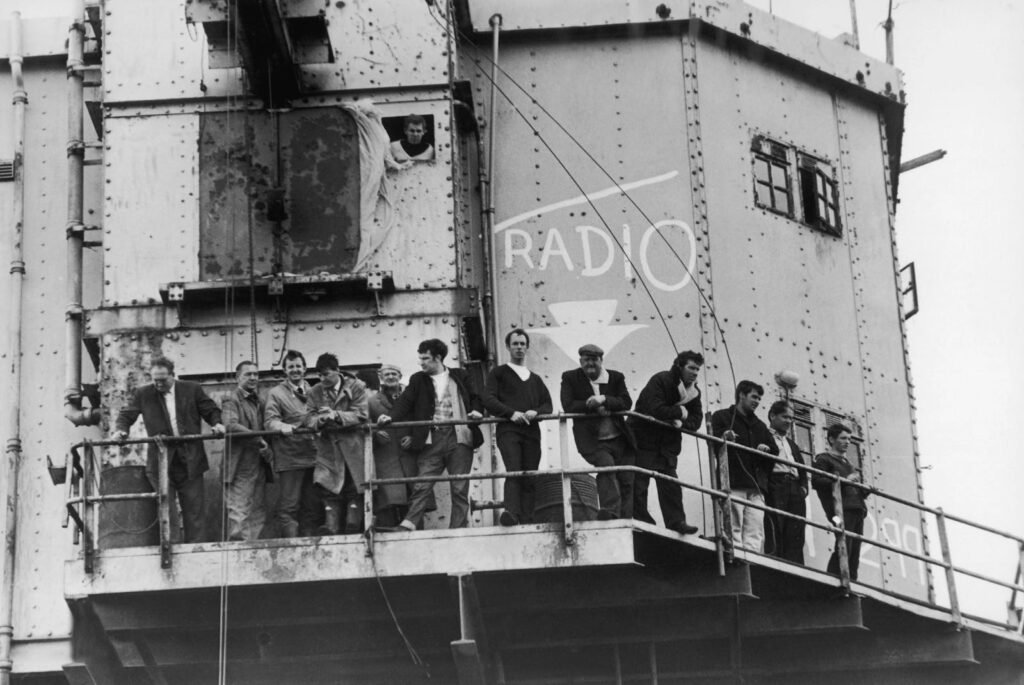
Introducing Roy Bates
Roy Bates was one of these broadcasters. Bates was a military man who rose to the rank of Infantry Major during the war. After the war, he became a fishing entrepreneur, running a large fleet of ships off the Essex coast.
Bates saw the success of these Pirate radio stations, and decided to start his own station based on another fort. He set up shop on Knock John Sea Fort and created Radio Essex, which he later renamed BBMS, or “Britain’s Better Music Station.”

The British government, however, was not happy about this inconvenient little Pirate radio loophole. They fought Bates in court, arguing that it was illegal to broadcast radio from there because Knock John existed within 3km of British territory.
They won the case. Bates was found guilty of broadcasting inside territorial waters in contravention of the 1949 Wireless Telegraphy Act, and was evicted from the island. 🥾
But Bates had a backup plan. After all, there was another fort located nearby called Roughs Tower. Although just a few miles away, it was located outside of that pesky 3km zone. But there was a problem: This tower was already occupied by a crew led by Ronan O’Rahilly, who owned another popular station called Radio Caroline.
So Bates did what any normal person would do, and decided to take it for himself. 😲 On Christmas Eve 1966 (presumably while O’Rahilly and his crew were home with their families), Bates and his men turned up to the empty tower and claimed ownership. Just like that.
Bates moved his old station’s equipment over to Roughs Tower, intending to set up shop once again. But he didn’t continue broadcasting.
As it turned out, Roy Bates had other plans.
The birth of Sealand
As you’d expect, O’Rahilly didn’t appreciate Bates’ self-proclaimed occupation, and it soon blew up into a huge argument. After some unsuccessful attempts to reach a compromise, O’Rahilly and his crew attempted to physically reclaim the fort.
They retaliated by storming the tower in early 1967. But, Bates was equipped with firearms and petrol bombs (!) and easily defended his hold on Roughs Tower.
After the battle, Bates had an idea — what if he just declared the fort an independent state? After all, it was outside the UK’s jurisdiction. Who was going to stop them?
So, on September 2nd 1967, Bates unveiled the world’s newest micronation: The Principality of Sealand.
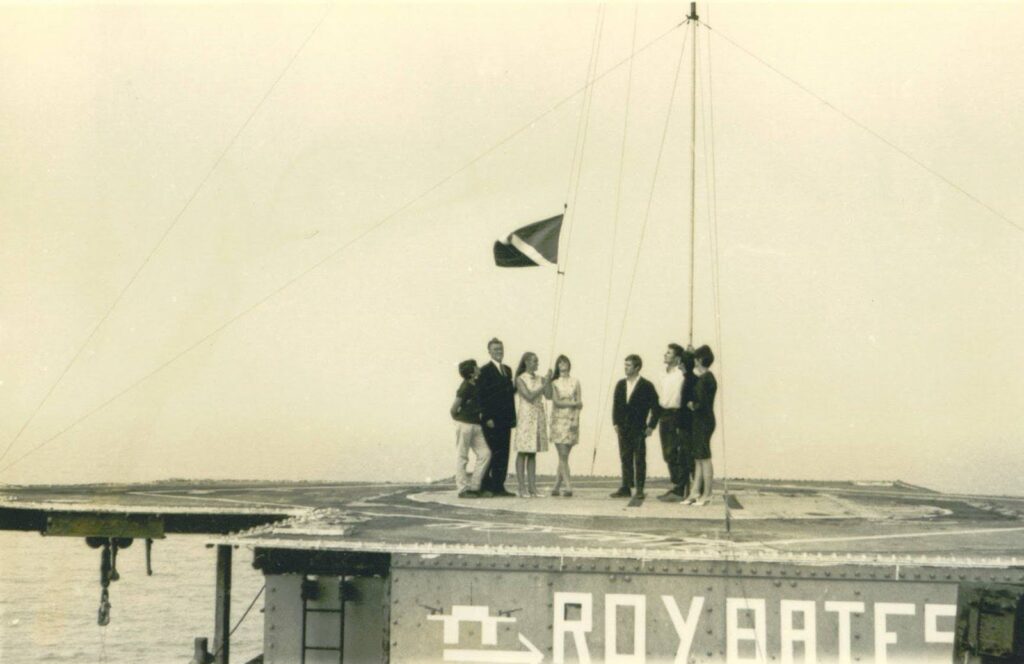
As a birthday gift to his wife, Joan, Roy Bates declared her the “Princess” of the new country.
And of course, Roy would rule as Prince.
Sealand’s first political test
Sealand is about the size of a soccer field, so there wasn’t a whole heap of land to defend. However, the British were understandably wary about a “nation” self-proclaiming sovereignty, especially as tensions rose between The United States and Cuba.
The British government reacted by (finally) destroying the remaining unoccupied Maunsell Forts. Helicopters plowed them down with explosives, sending plumes of smoke and debris swirling into the ocean air. 💥
Sealand describes the incident like this:
The Bates family looked on as huge explosions sent the massive structures hurtling hundreds of feet in the air, and twisted and buckled debris floated past Sealand for days… Helicopters that had carried the explosives buzzed menacingly above, and the navy tug carrying the demolition crew passed close by our fortress home and shouted, ‘You’re next!’
In 1968, a British vessel innocently entered “Sealand territory” because its workmen needed to fix a buoy. But the leveling of the remaining towers caused the Bates to become paranoid of an impending attack. So Roy’s son Michael fired warning shots and Molotov cocktails at the workers to scare them off.

This was a risky move. Although they had declared themselves a separate nation, Roy and Michael Bates were still British citizens, and were summoned to court on firearms charges.
But incredibly, after much legal toing and froing, the case against Roy and Michael was thrown out of court.
This granted the Principality of Sealand its biggest victory yet — recognition as a de facto nation!
According to the judge:
This is a swashbuckling incident perhaps more akin to the time of Sir Francis Drake, but my judgment is that the UK courts have no jurisdiction.
Sealand’s Constitution
After the legal victory, about 50 people came to live in this so-called smallest country in the world — mainly weirdo friends of the Bates family who wanted to live freely outside the UK’s reach.
In celebration, Sealand released its official Constitution in 1975. The Constitution comprises a preamble and seven chapters related to tax, residency, and bank laws. They created a unique currency, passports, and postage stamps.


They even created a national anthem:
IMO this is a bit too “70s synth” for a proper national anthem, but it’s still pretty catchy.
The war for Sealand
Between 1968-78, the citizens of Sealand lived in relative peace. The occupants arranged regular boats dropping off the basics (food, booze, the daily newspaper, etc.) They transformed the once-militarized concrete sea legs into ten rooms, including a kitchen, sleeping quarters (below sea level) and a chapel.
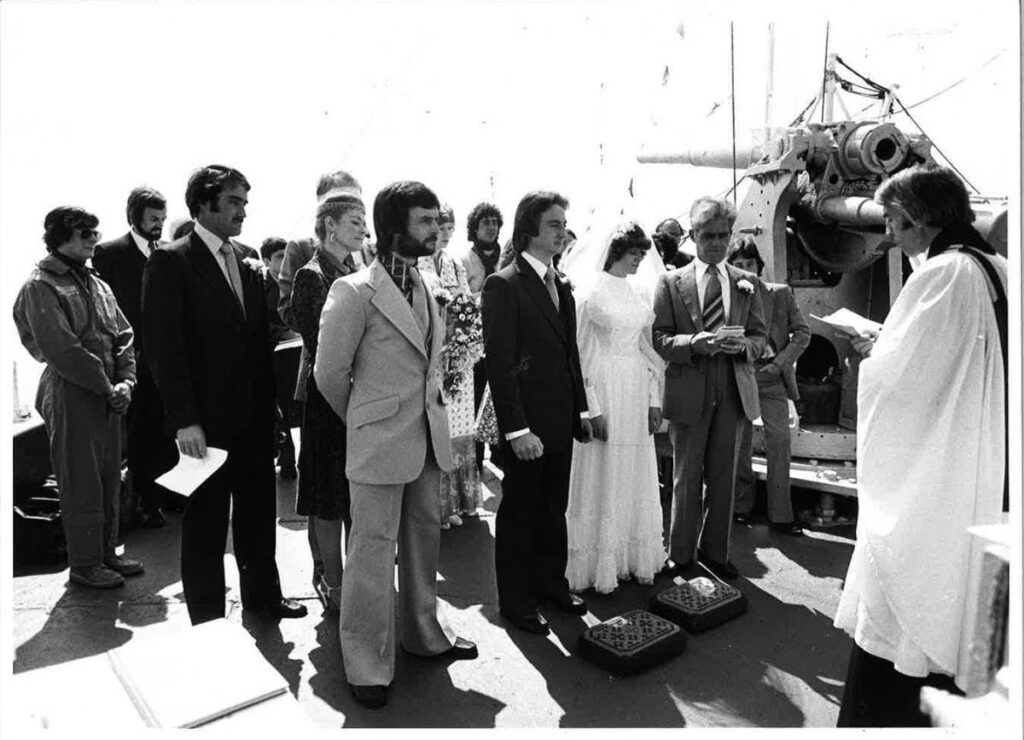
Then, in 1978, Sealand faced the biggest threat to its existence yet. Only this time, it wasn’t from the British.
It started when a group of German and Dutch diamond salesmen proposed a vague business offer and requested Prince and Princess Bates to be flown to Austria for a meeting, which they did.
Upon arriving in Austria, however, Roy and his wife heard nothing. No rendezvous, not a word from the businessmen at all.
As the couple grew restless, they attempted to contact Michael, who was back in Sealand. But again, they heard nothing.
Finally, Michael managed to get in touch with his parents, and confirmed that the worst had happened: Sealand had been invaded by the “diamond businessmen.” The German Alexander Achenbach showed up with a crew of terrorists, and claimed he was the rightful Prime Minister of the micronation.

The armed terrorists stormed in, arriving by helicopter and speedboats. They took Michael Bates hostage, locked him up, and kept him without food or water for three days.
Upon hearing this, Prince Roy went into beast mode. He enlisted the help of armed fishermen to fight back until he could get back there himself. According to legend, Bates was friends with a helicopter pilot stuntman from the actual James Bond movies, who agreed to fly them back in the middle of the night and recapture Sealand.
Now bear with me, because these details are very murky. But from what we gather, it seems that Bates, his wife, and the James Bond pilot flew back to Sealand on the chopper and recaptured the island within days; sliding down 100ft ropes from a helicopter, fighting off the invaders and capturing a few prisoners.
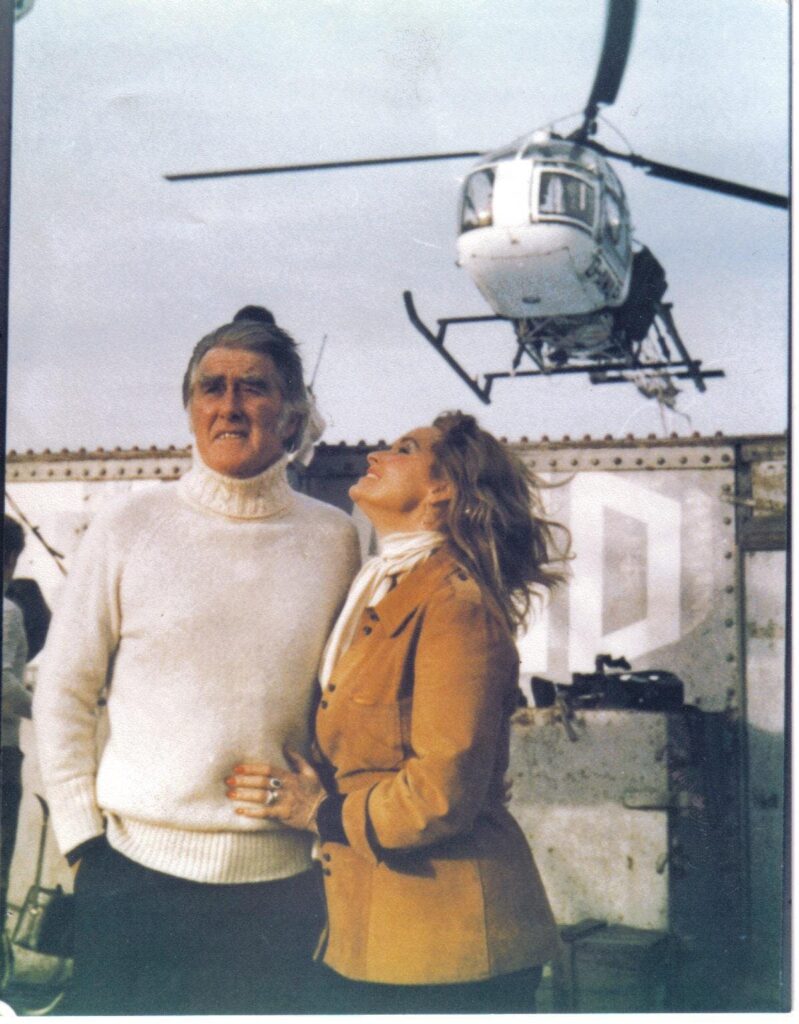
Bates kept some prisoners for a while, but eventually released all terrorists except for Achenbach, a German citizen/Sealand passport holder who Bates charged with treason.
Bates told Achenbach to pay a $35,000 ransom, and the German embassy actually sent a diplomat to negotiate Achenbach’s release, which Bates eventually agreed to.
Sealand never actually received its money from the Germans, but the events of 1978 were a total win regardless. They had successfully fought off a coup, and won their greatest battle of all time.
And the fact that Germany had sent a diplomat further legitimized them as a de facto nation.

The Pirate Bay
Fast-forward to 2007. Roy and Joan Bates were in their elder years (Roy was 81), and keeping up with operations was becoming, as an old Brit would say, really bloody difficult.
It’s impossible to know exactly how much money it took to run things, but repairs were critical. When your house needs a new roof, you can put it off a few years and it’s no biggie. But when you live in a concrete structure constantly getting pounded by saltwater? Yeah, it’s pretty important to stay on top of repairs. By the 2000s, Roy had spent over £3m refurbishing the structure.
Times were getting tough, and they considered selling. But who would be interested in buying a rusting old military anti-aircraft platform in the North Sea? As it turns out, a Swedish company called Piratbyran was interested.
If Piratbyran sounds familiar, that’s because it’s the founders of The Pirate Bay, the world’s most notorious torrenting platform.

Bates asked £65 million for Sealand. But after a long negotiation, the parties couldn’t agree on a price. It was taken off the market and remained in the hands of the Bates family.
Piratbyran wasn’t the only “quasi-legal” company that approached Bates. A data company called HavenCo also set up operations in Sealand. They were looking to avoid any traditional jurisdiction for their data, which had no restrictions except child pornography, spam, and hacking. But in the end, it wasn’t enough to protect them from intelligence agencies, and HavenCo shut down in 2008.

Sealand today
The 60s and 70s were pretty choppy, but the seas have been relatively calm and quiet since then. Sealand mainly operates as sort of an “offshore hangout pad” for the Bates family and friends. According to the family, Sealand’s population is “normally like two people.”
Prince Roy Bates of Sealand died in 2012 at age 91, and his wife Princess Joan passed a few years later. She passed ownership to Prince Michael Bates, who doesn’t even live there. He wrote a book called Holding the Fort (two points for the title). He goes on podcasts, poses for photographs, etc. He doesn’t seem to care about sticking it to the man anymore. It’s all kind of kitsch and funny at this point.
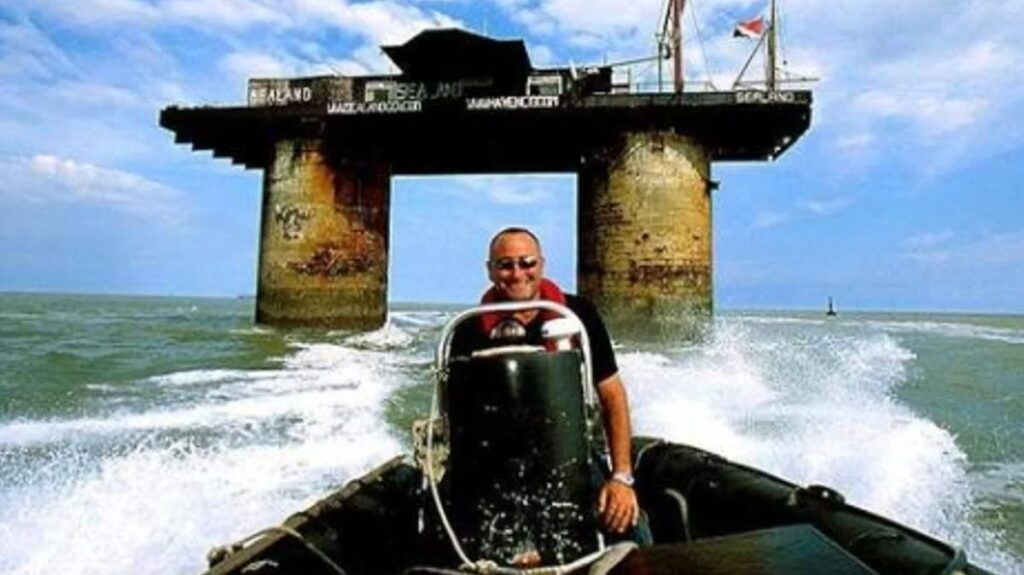
Sealand maintains a level of self-sufficiency through the production and distribution of national coins, stamps, merchandise, and occasional seafood deals with maritime traders.

Sealand still distributes its currency, the Sealand Dollar. But it’s a pure collector’s item, not a real store of value. The Sealand Dollar is intended to maintain parity with the US dollar (not the British pound).

Because the country is a micronation, it can legally distribute noble deeds to whoever they please. That includes knighthoods, counts, lords and baronesses, all of which can, get this, be purchased from Sealand’s official site. As far as souvenirs go, it’s actually pretty cool.

Oh, and you know Ed Sheeran? You should probably stop calling him that – his correct title is actually Baron von Edward Sheeran of Sealand.

Sealand also has its own national soccer team. It plays in a special league comprised of other unrecognized states and real countries that cannot participate in FIFA. The league is owned by the NF Board, and includes nations such as Monaco, Greenland, Provence (France), Northern Cyprus and Chechnya (Russia).
Since the league’s creation in 2003, there have been five Viva World Cups. Unfortunately, Sealand has never managed to raise enough funds to participate in one of these tournaments.
Not only has Sealand never officially been recognized as a country, but in 1987 the UK quietly, legally expanded its territory to 12km off the coast, which encompasses Sealand.
They didn’t make a big stink of it. They didn’t invade Sealand, guns blazing, legal docs in hand. They didn’t threaten the Bates family, have them arrested, or drop any bombs.
At the end of the day, it’s basically just a small, crappy British island.
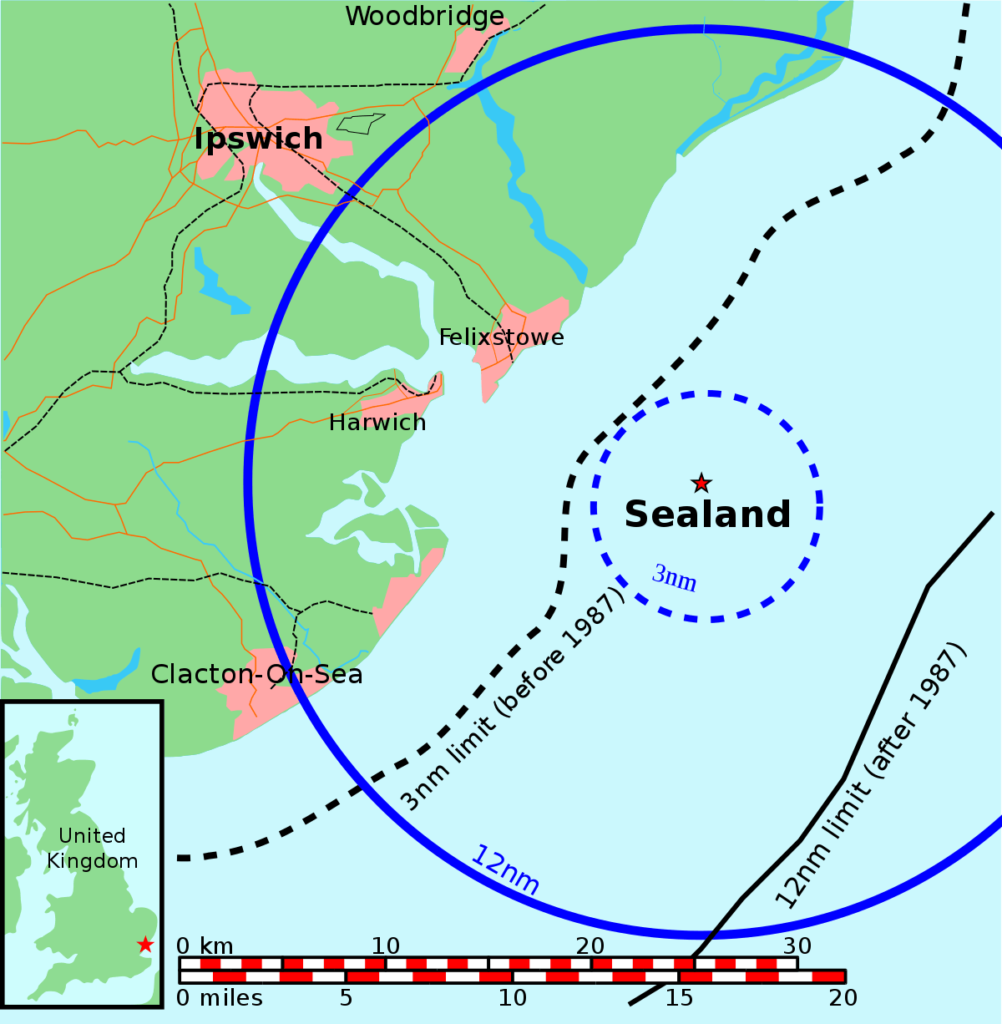
Closing thoughts
There are actually quite a few stories of modern-era micronations. But Sealand was the first.
It sounds crazy to find an abandoned naval base in the middle of the ocean and claim it as your own country. But that’s exactly what Roy Bates did in the 1960s, and nearly six decades on, it’s still standing.
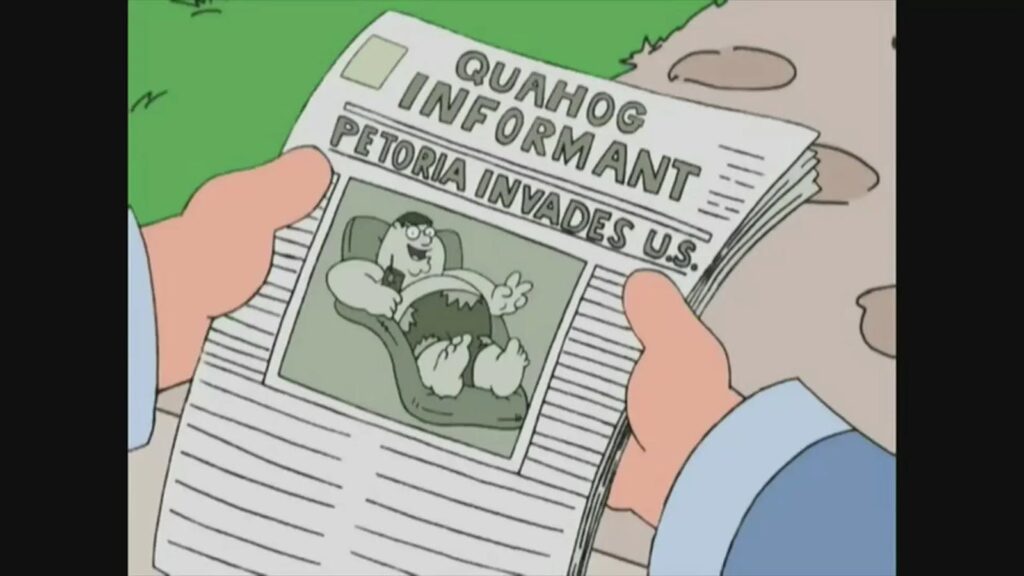
Sealand could’ve ended up as a damn good financial investment if Bates had managed to sell. But it was never about the money anyways. The family valued loyalty, pride, and principle over riches.

Unfortunately, Sealand isn’t a particularly tourist-friendly place. Neither the UK nor the Sealand government allows anyone other than special guests to board their land.
But not to worry — you can get a taste of the life and become an honorary Duke of Sealand. Or Count. Or Sir.
Head over to the official Sealand shop and check out some of their merch. Unless you plan on invading some decommissioned military structures, it’s probably the closest you’ll get to owning your own country.








